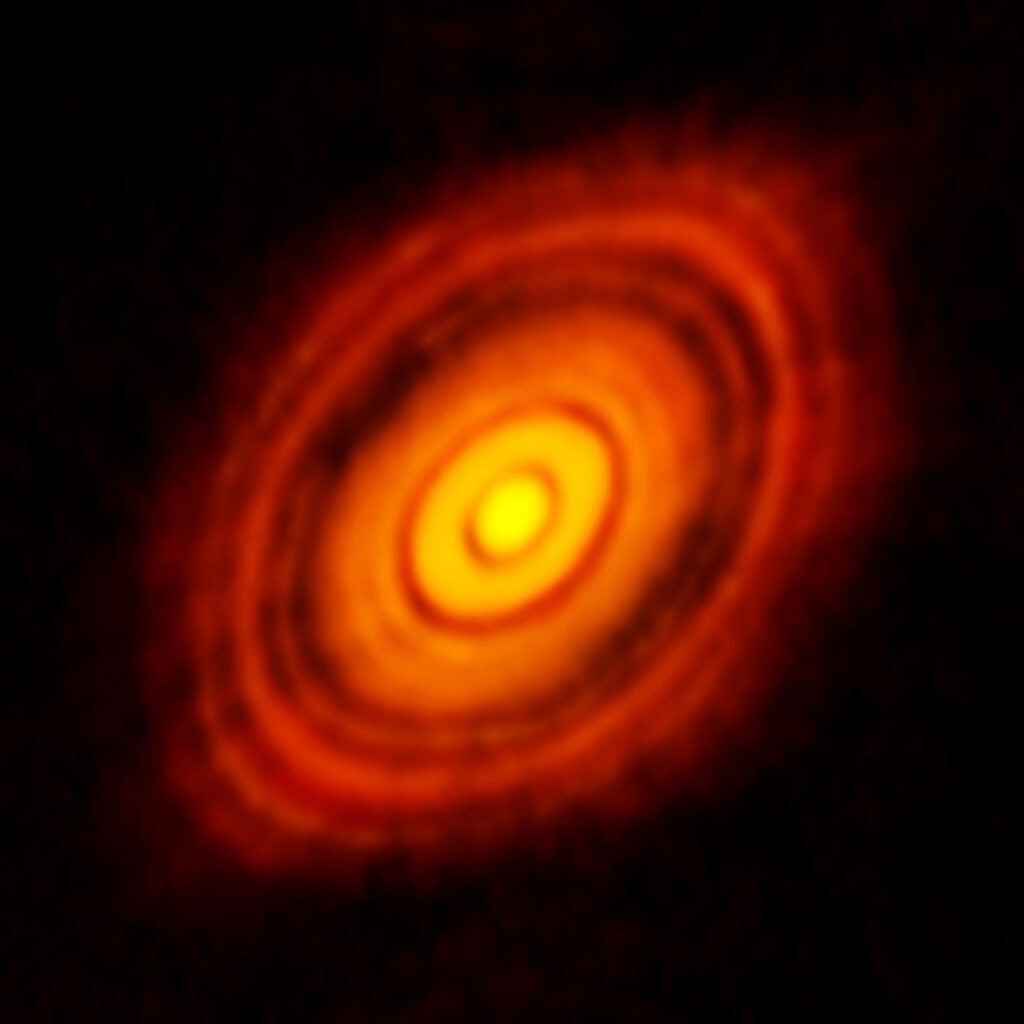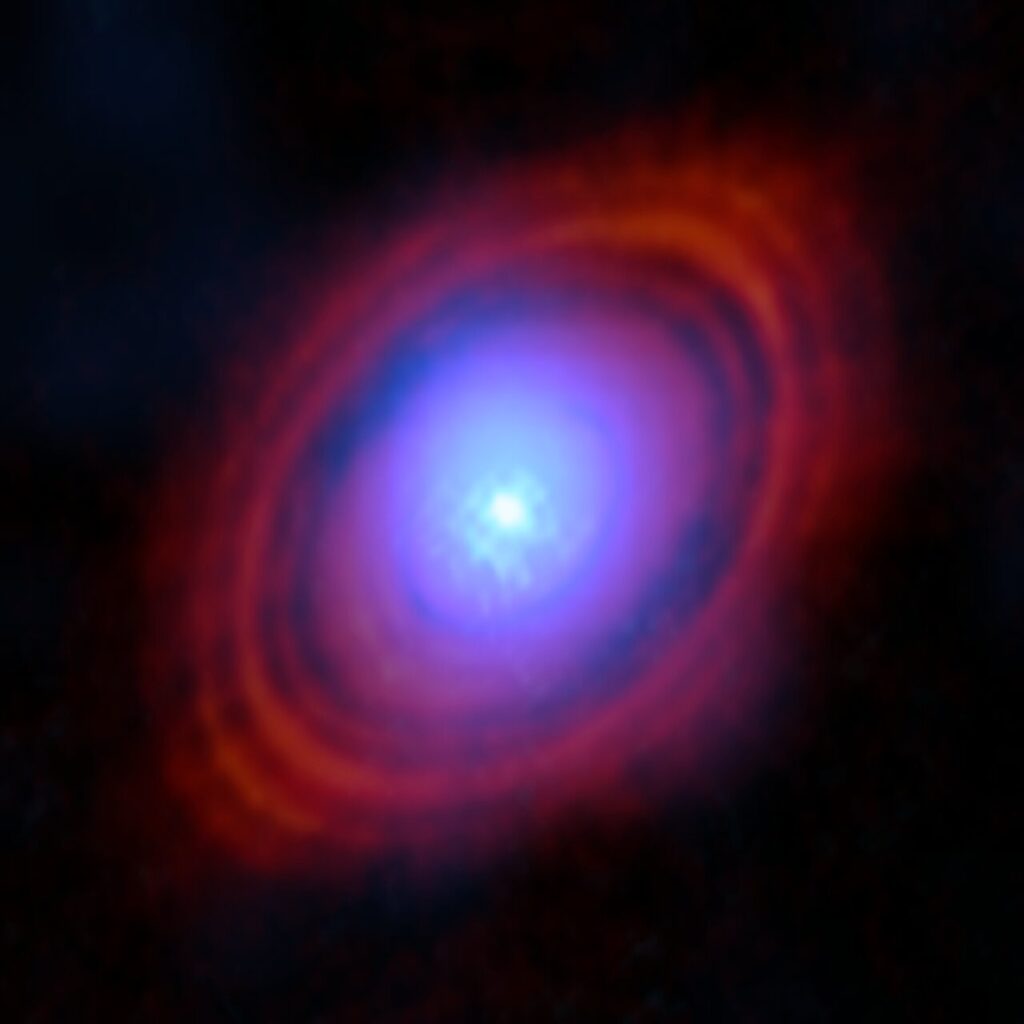Astronomers could make the first map of the distribution of water vapor in the protoplanetary disk. A new world is forming in it right now.

The discovery was made thanks to the ALMA radio telescope complex. Its target was the sun-like star HL Tauri. It is located 450 light-years from Earth in the direction of the constellation Taurus.
HL Tauri is surrounded by a “cool” protoplanetary disk. According to scientists, such structures have the most favorable conditions for the formation of exoplanets. It’s cold enough there for the water to freeze on the dust particles. This ensures their more efficient adhesion, which contributes to the formation of the embryos of new worlds.
Until recently, astronomers could not make a map of the distribution of water in such disks. This is due to the fact that water vapor in the Earth’s atmosphere drowns out its signals. Fortunately, ALMA is located at an altitude of 5,000 meters in the Chilean Atacama desert. The combination of extremely dry air and the technical capabilities of the complex allowed scientists to solve this problem.
Observations have shown that the inner part of the protoplanetary disk HL Tauri contains at least three times more water than all the oceans of the Earth. A significant amount of it has been found in the area where the gap is located. It is believed that it is caused by a young planet forming in it, which grows by collecting surrounding material — including water.

Astronomers hope that after commissioning the ESO’s Extremely Large Telescope, they will be able to obtain much more detailed images of the inner parts of protoplanetary disks, where planets like our Earth are forming.
Earlier, we talked about how extraterrestrial civilizations could get trapped on “aquarium planets”.
According to https://www.almaobservatory.org
Follow us on Twitter to get the most interesting space news in time
https://twitter.comne/ust_magazine


